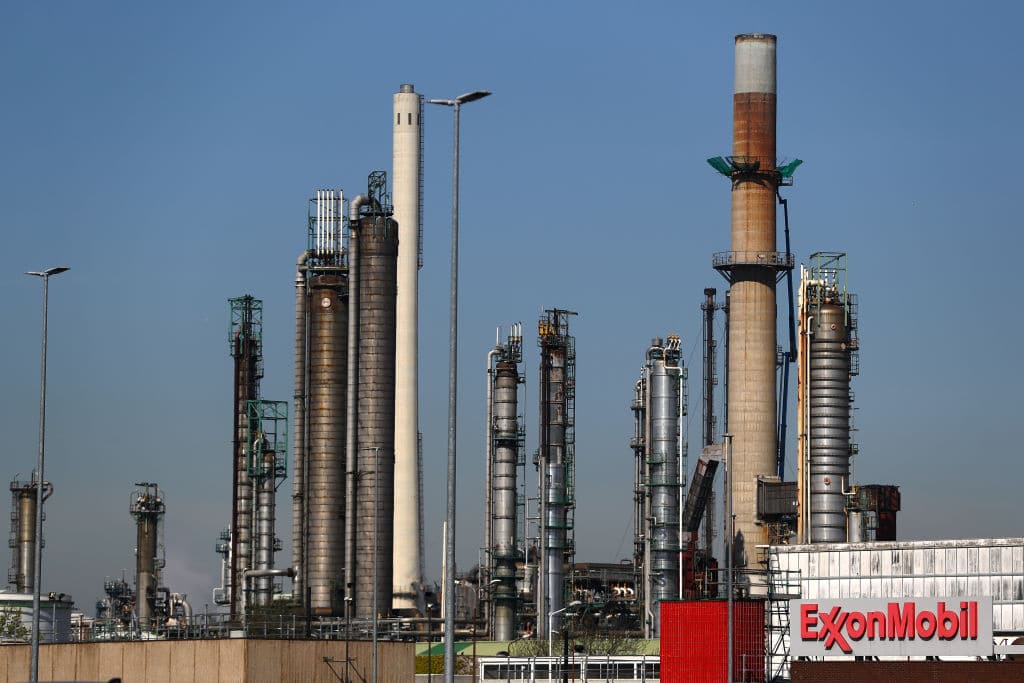

After pressure from its investors, ExxonMobil has promised to achieve net zero emissions for its operations by 2050.
The pledge includes emissions from the company’s oil, gas and chemical production and the energy used to power these operations, Reuters reported. However, it does not include emissions from consumers who use its products, and environmental activists expressed skepticism about the company’s promise.
“What are we going to see next, Darth Vader sending out a press release about a sustainable Death Star?” Fossil Free Media director Jamie Henn told The Independent. “ExxonMobil remains a planet destroyer and the obfuscations and half-truths they’re using to claim a pathway to ‘net-zero’ won’t change that in the slightest. The gaps in this plan are big enough to fly an asteroid through.”
Exxon is one of 20 fossil fuel companies responsible for 35 percent of energy-related greenhouse gas emissions since 1965. There is also evidence that the company was aware of the consequences of its actions but acted to cast public doubt on the science behind the climate crisis.
However, Exxon underwent a change in leadership last year when shareholders forced out three directors and replaced them with candidates proposed by a hedge fund that wanted the oil giant to prepare for a low carbon future, Reuters reported. Since then, it has directed $15 billion toward emissions initiatives over the next six years and promised to achieve net zero for its operations in the Permian Basin by 2030.
The new commitment extends this to global operations.
“We are developing comprehensive roadmaps to reduce greenhouse gas emissions from our operated assets around the world,” Exxon Chief Executive Officer Darren Woods said in a statement reported by Reuters.
The company said it had pinpointed 150 ways to change its production practices; for example, by powering operations with renewable energy and ending the flaring and venting of methane, The New York Times reported.
“We’ve got a line of sight,” Woods told The New York Times. “By the end of this year, 90 percent of our assets will have road maps to reduce emissions and realize this net-zero future.”
The pledge only covers emissions from production and the energy used for that production, otherwise known as Scope 1 and Scope 2 emissions respectively. It does not cover Scope 3 emissions, which are the emissions generated when people drive cars or power their homes using Exxon products. These emissions usually account for the majority of a company’s carbon footprint.
This puts Exxon behind competitors like Shell, Equinor, BP and Occidental Petroleum, which have included Scope 3 emissions in their net zero pledges. However, Occidental Petroleum is the only U.S. company that has included Scope 3 emissions. Chevron’s net-zero target is similar to Exxon’s in that it only covers operations.
“Exxon’s lack of a scope 3 target reflects a strategy that may leave it behind the curve in growing clean energy sectors,” Will Scargill, managing energy analyst at GlobalData, told Reuters.
While the new pledge does not include Scope 3 emissions, Woods told The New York Times that Exxon was working to address them by working on carbon capture, as well as developing low carbon alternative fuels for airplanes and heavy transportation.
But environmental advocates worry that carbon capture technology is just a stalling tactic to stave off a rapid and thorough transition to renewable energy.
The Center for International Environmental Law, for example, argued that it was “expensive, energy-intensive, and unproven at scale” and “entrenches reliance on fossil fuels,” as The Independent reported.
Henn also noted that Exxon is still spending most of its money on fossil fuels.
“The investments in climate solutions that Exxon is touting are still only around 10 per cent of their capital expenditures per year, meaning the other 90 per cent is going to oil, gas, plastics, and other polluting products,” he told The Independent.

 233k
233k  41k
41k  Subscribe
Subscribe 